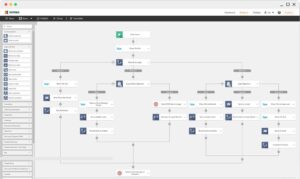
The First 10 Things Most Businesses Should Automate with AI Tools
Automation has revolutionized how businesses operate, and artificial intelligence (AI) tools are making it easier than ever to streamline tasks, save time, and boost efficiency. If your business has just discovered the power of AI, here are the first 10 things you should consider automating to maximize impact and see immediate benefits:

1. Customer Support with Chatbots
AI-powered chatbots can handle FAQs, provide 24/7 customer service, and resolve basic inquiries, freeing up your team for more complex tasks. Platforms like ChatGPT or Zendesk AI allow you to set up a virtual assistant tailored to your business needs.
Why automate? Reduce response times, improve customer satisfaction, and never miss a customer query.
2. Email Marketing Campaigns
Automate personalized email campaigns with tools like Mailchimp, HubSpot, or Klaviyo. AI can segment audiences, schedule emails, and even optimize subject lines for better engagement.
Why automate? Increase conversions while saving hours of manual work.
3. Social Media Posting
Tools like Buffer, Hootsuite, or Canva’s AI-powered content generator can create, schedule, and post social media content. Some platforms even analyze the best times to post for maximum engagement.
Why automate? Maintain a consistent online presence without the daily grind.
4. Lead Generation and Qualification
AI tools like Pipedrive or HubSpot’s CRM can automate lead generation, qualification, and follow-ups. Use AI to identify high-potential leads and nurture them through the sales funnel.
Why automate? Focus your sales efforts on the most promising leads.
5. Appointment Scheduling
AI tools like Calendly, Microsoft Bookings, or Clara can manage your calendar by scheduling appointments, sending reminders, and even rescheduling when necessary.
Why automate? Eliminate back-and-forth emails and improve appointment attendance.
6. Inventory Management
For e-commerce or retail businesses, AI tools like TradeGecko or Shopify’s inventory management system can automate stock tracking, reordering, and even demand forecasting.
Why automate? Avoid overstocking or running out of products and optimize your supply chain.
7. Data Entry and Reporting
Use tools like Zapier, Airtable, or Microsoft Power Automate to connect systems and eliminate manual data entry. AI tools like Tableau or Google Data Studio can also generate insightful reports automatically.
Why automate? Reduce human errors and spend more time analyzing data instead of entering it.
8. Financial Processes
Automate invoicing, expense tracking, and payroll with tools like QuickBooks, FreshBooks, or Gusto. AI can also help identify trends in financial data and flag potential issues.
Why automate? Simplify financial management and reduce the risk of errors.
9. Employee Onboarding
HR tools like BambooHR or Workday can automate onboarding tasks, including document signing, training schedules, and introduction emails. AI can even personalize the onboarding experience.
Why automate? Streamline the process for new hires and make a great first impression.
10. Document Management
AI tools like DocuSign, PandaDoc, or Notion can handle contracts, proposals, and other documents, making it easier to create, send, and track documents in one place.
Why automate? Save time on document creation and ensure a smoother workflow.
Conclusion
Starting your AI automation journey can feel overwhelming, but focusing on these 10 areas can yield significant time savings, cost reductions, and productivity gains. By automating repetitive tasks, your business can free up resources to focus on growth, creativity, and customer satisfaction.
Ready to transform your business with AI automation? Start small, measure your results, and scale up as you see success. The future is here—embrace it today!
Share this content:



















Post Comment